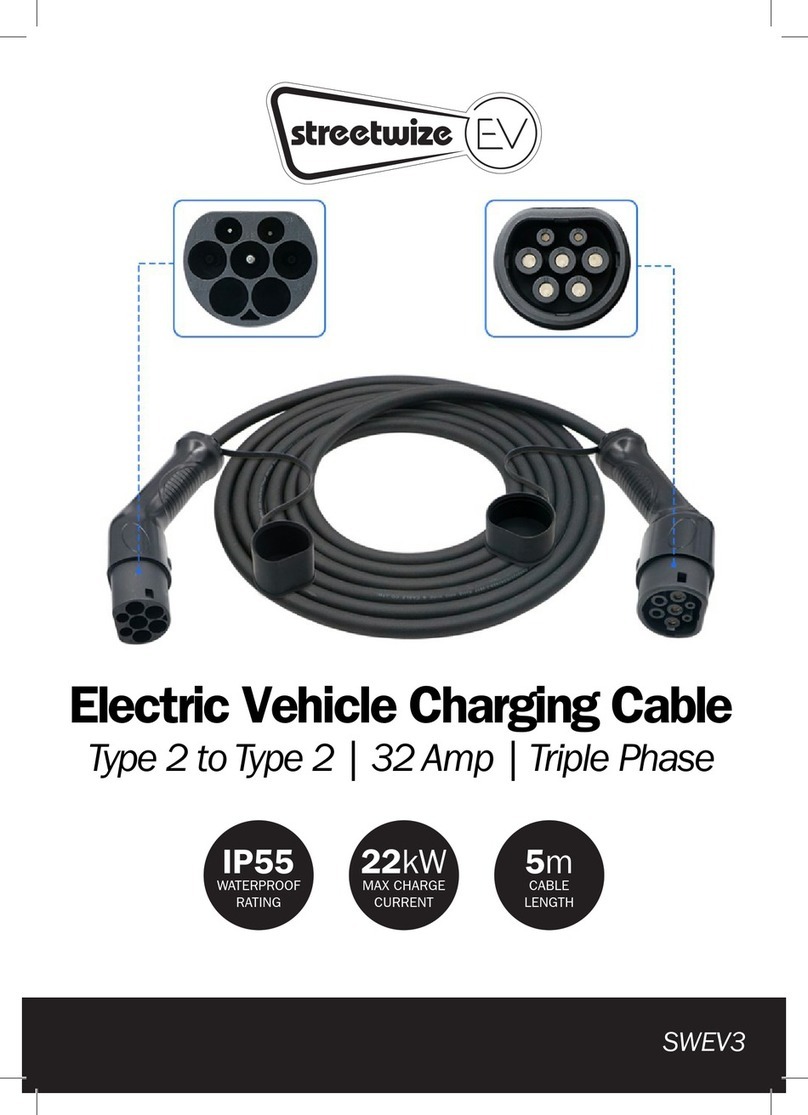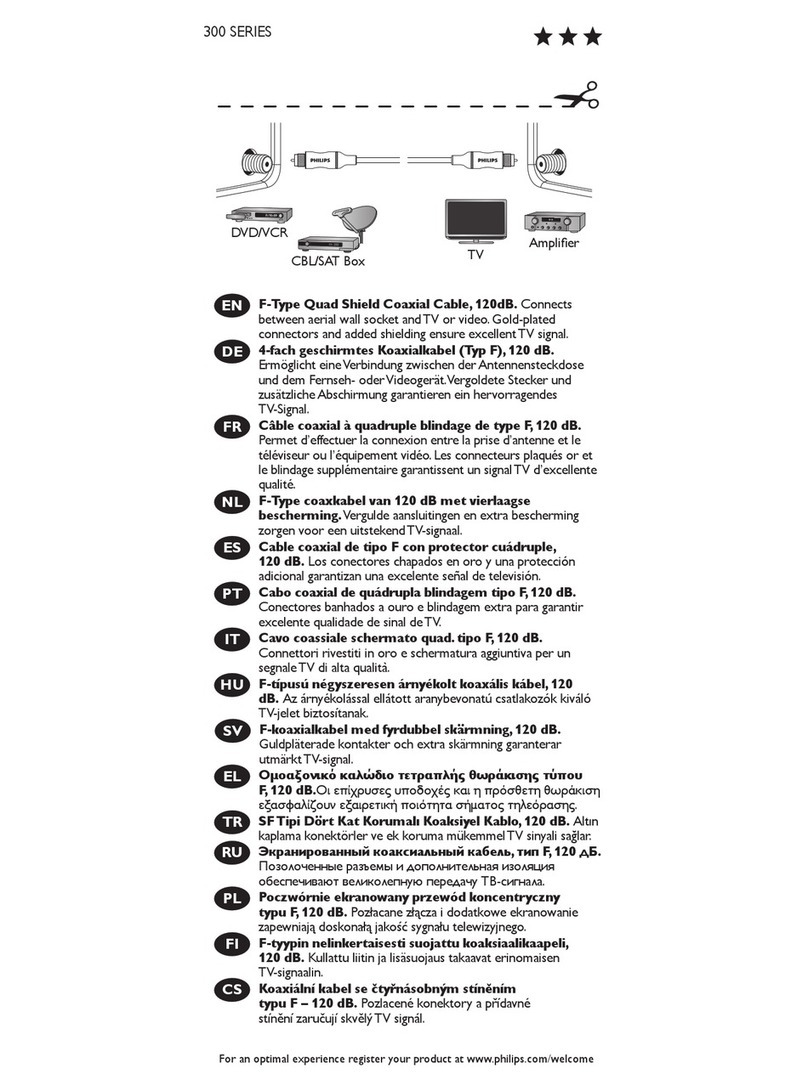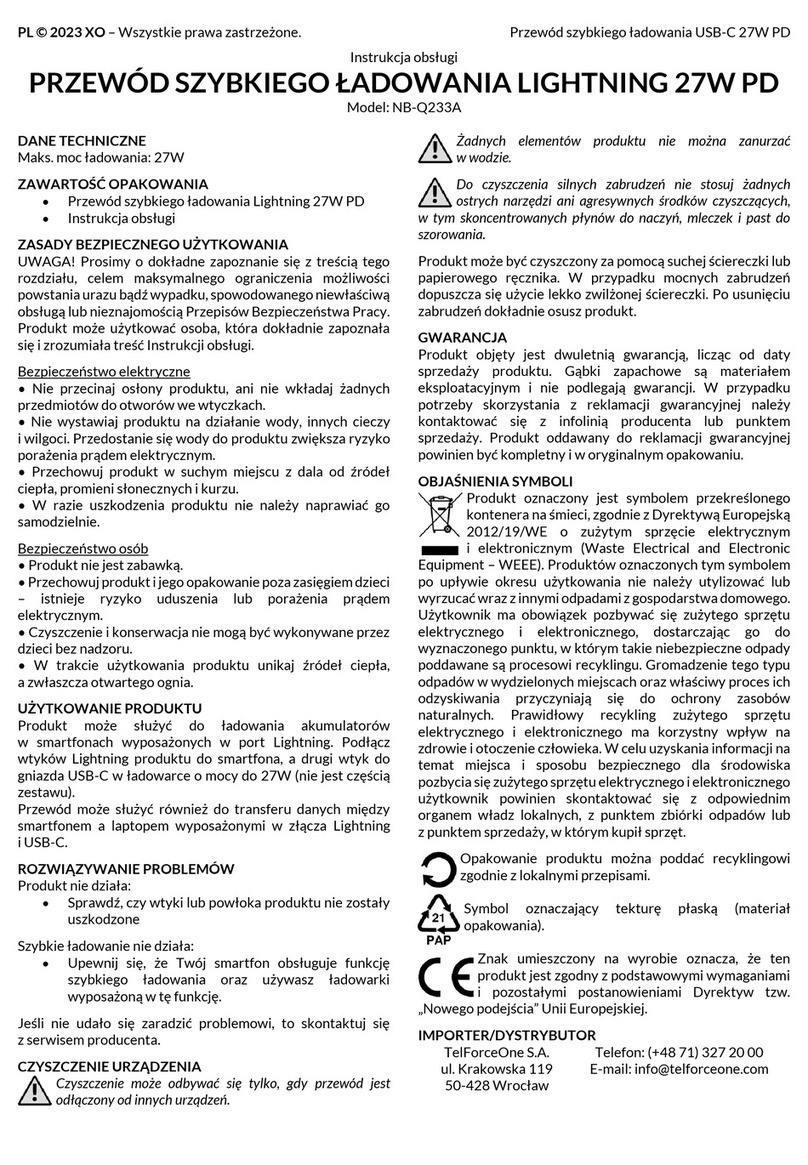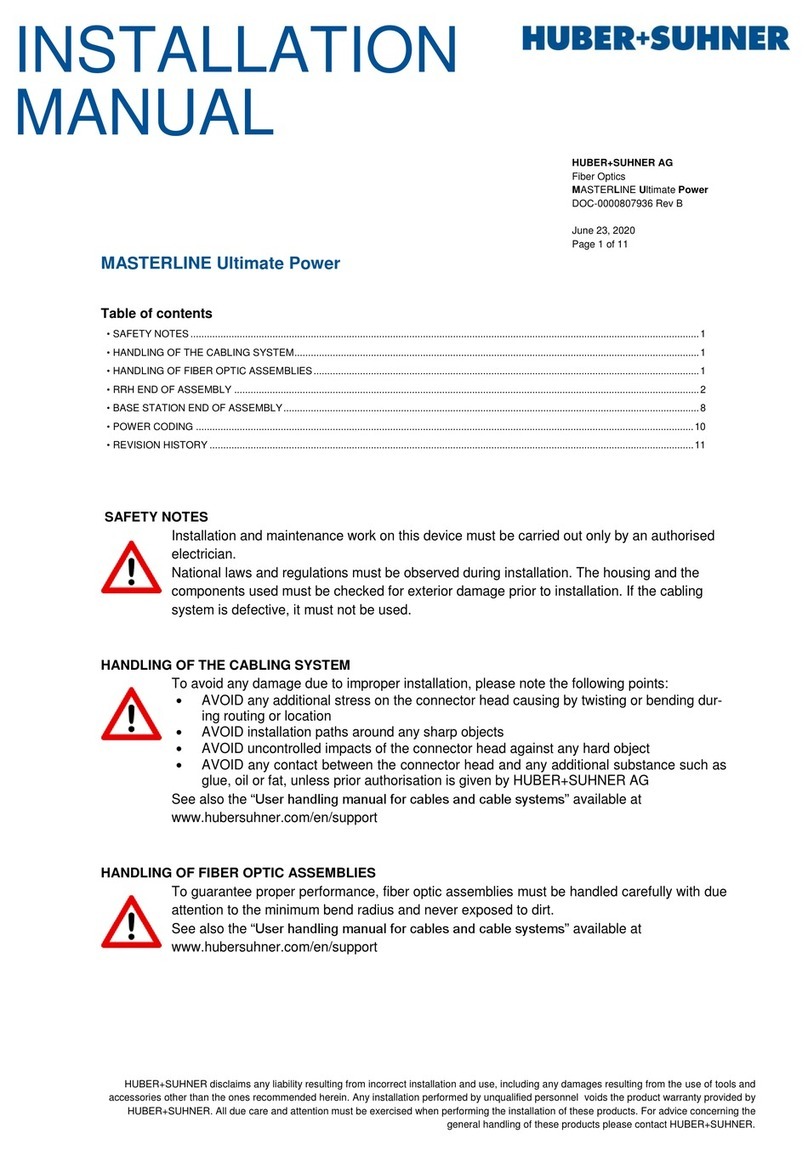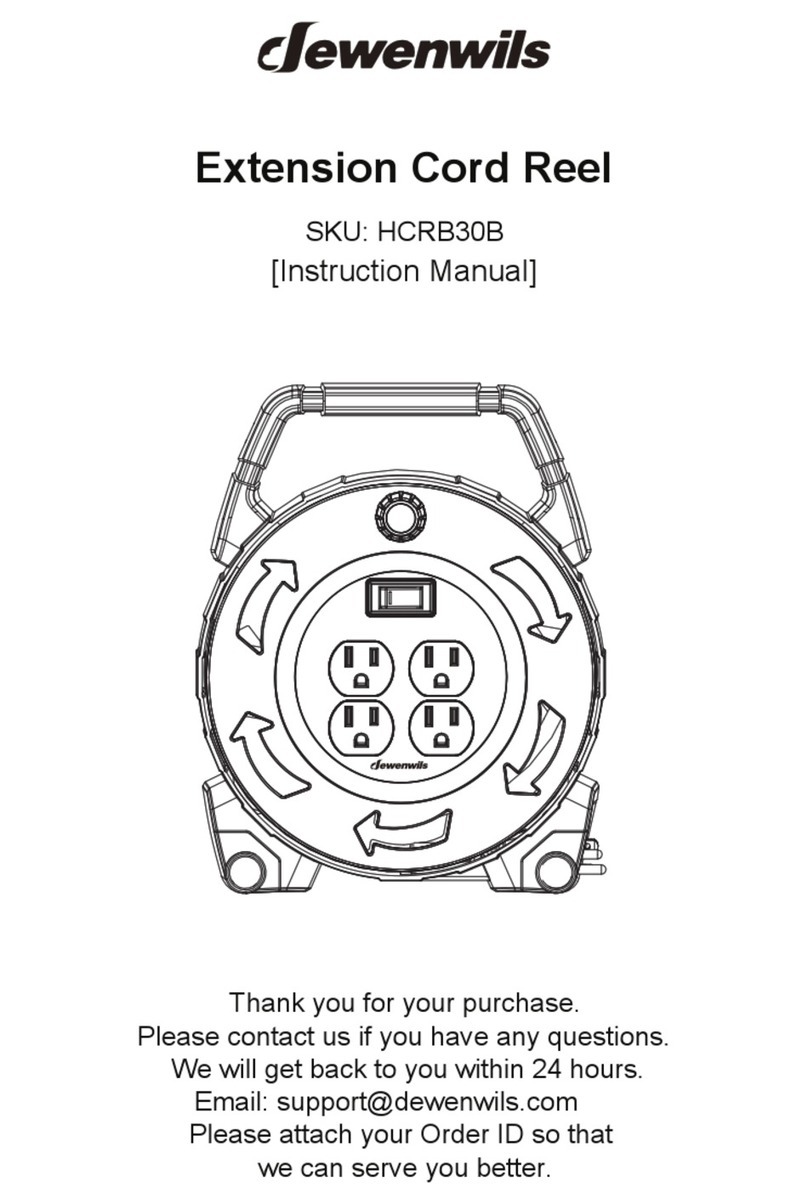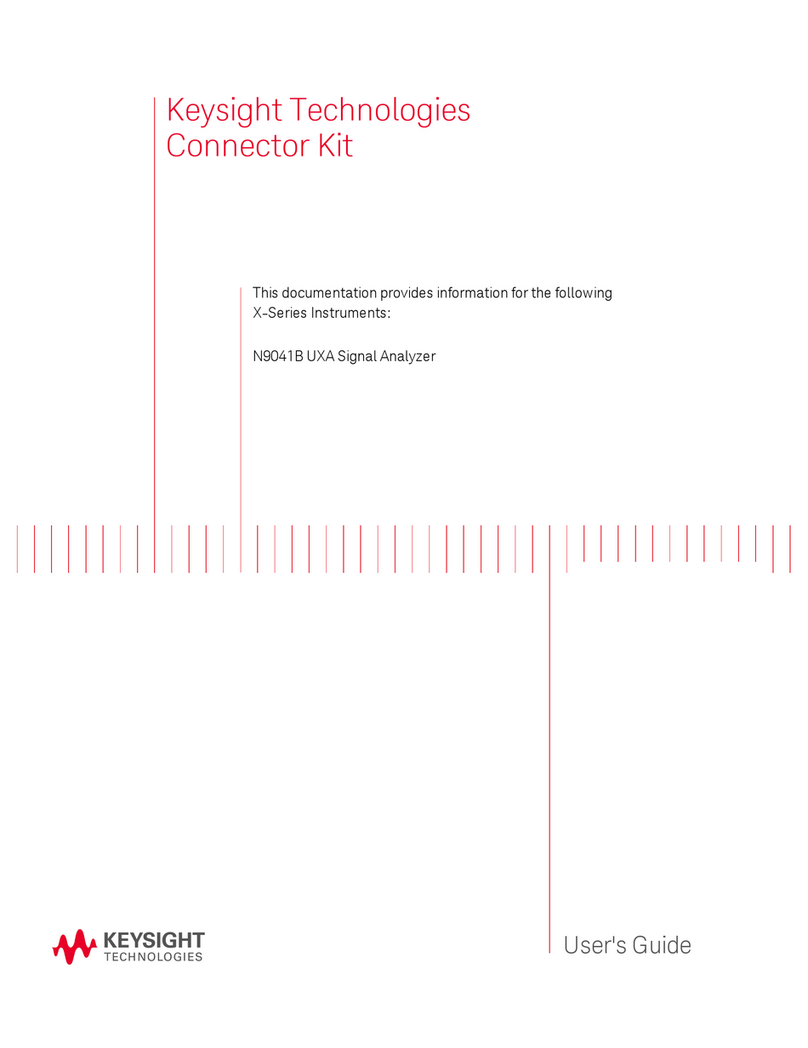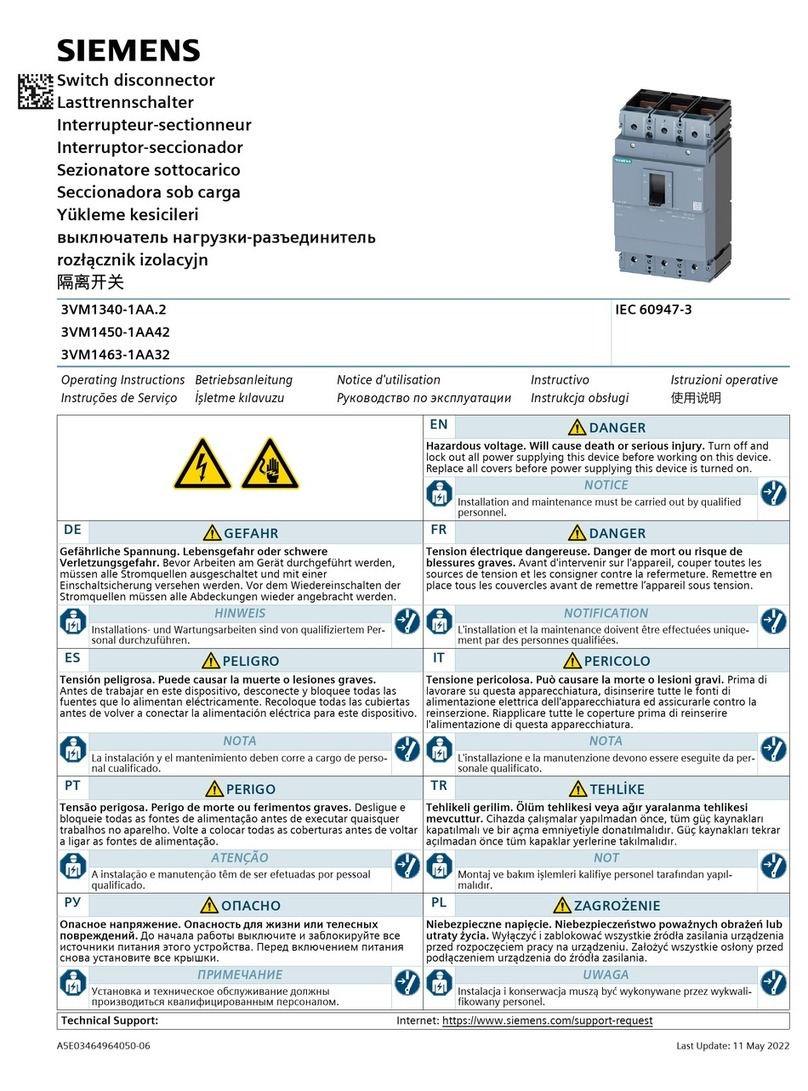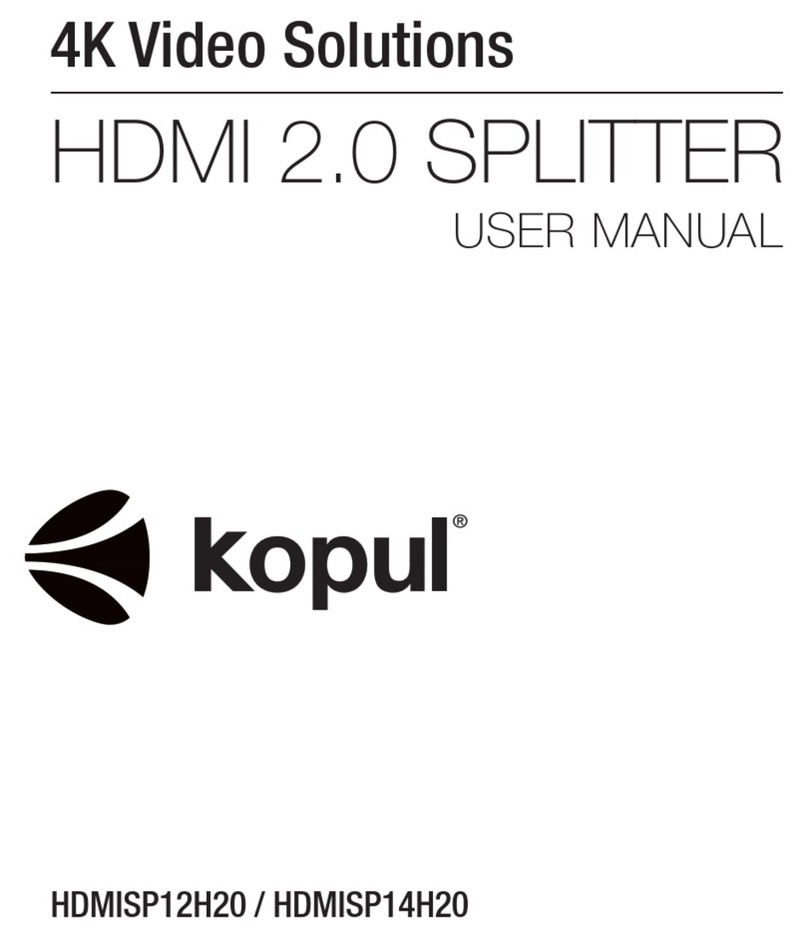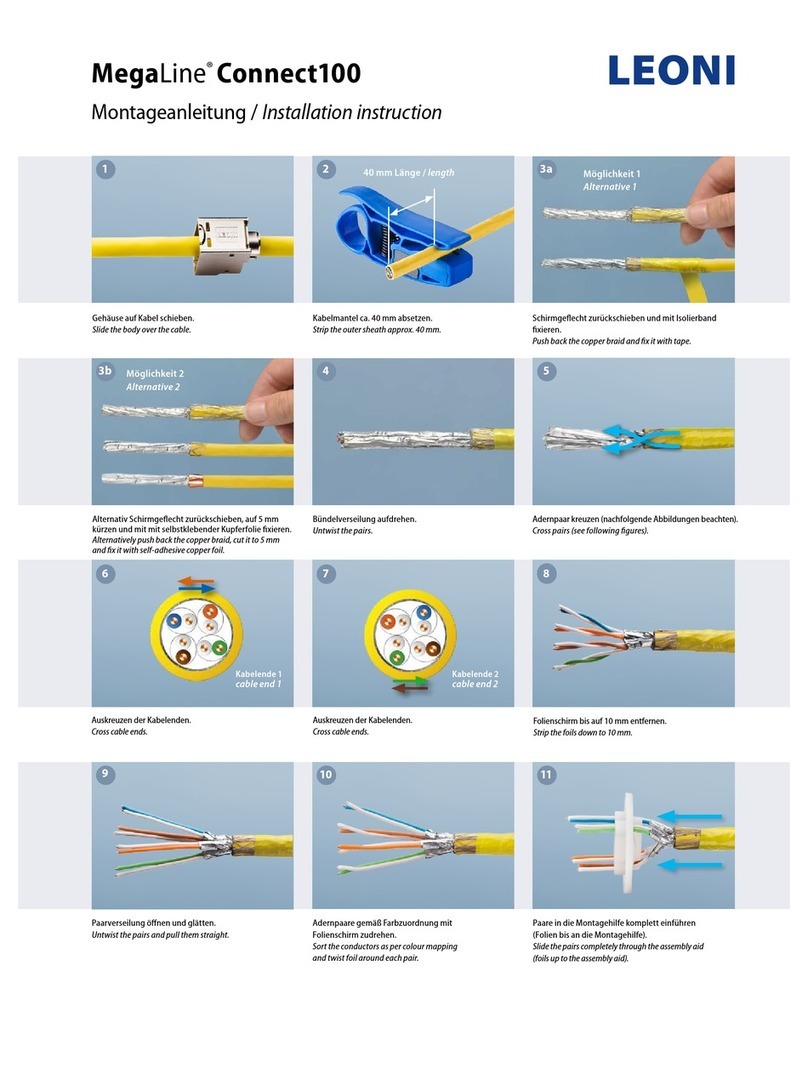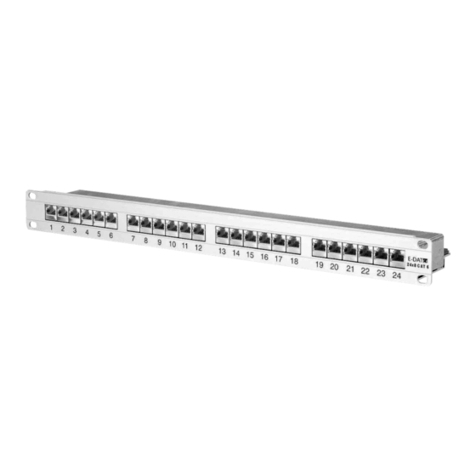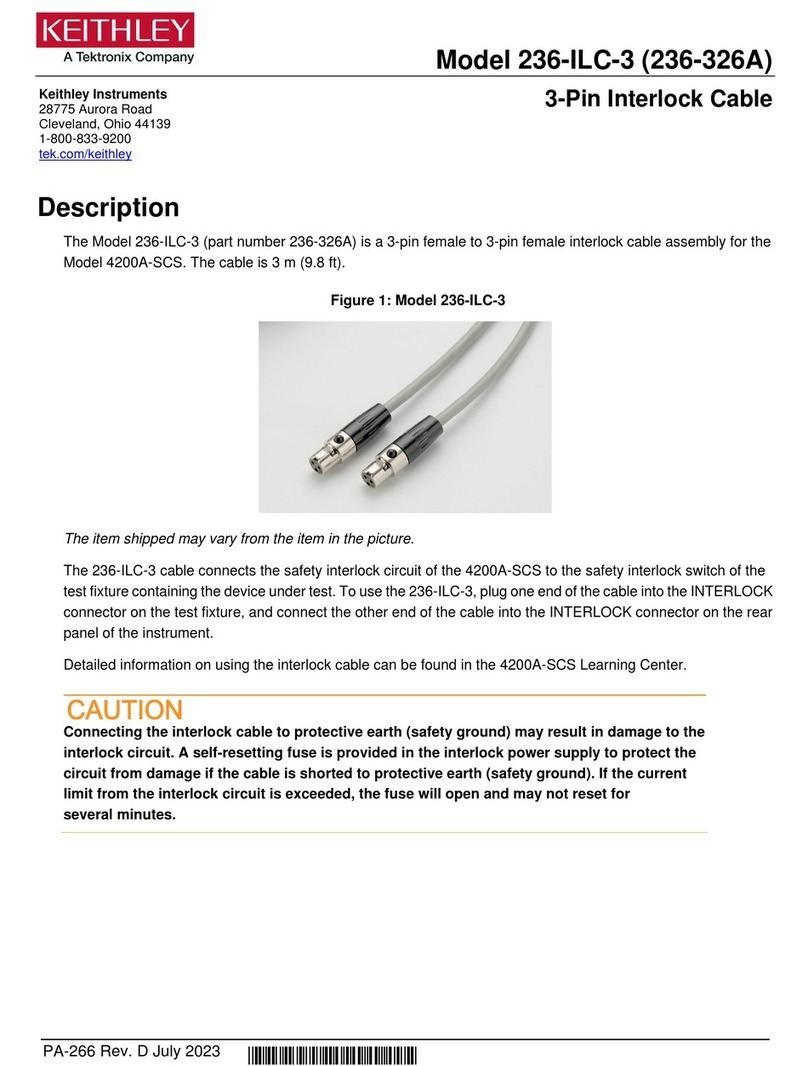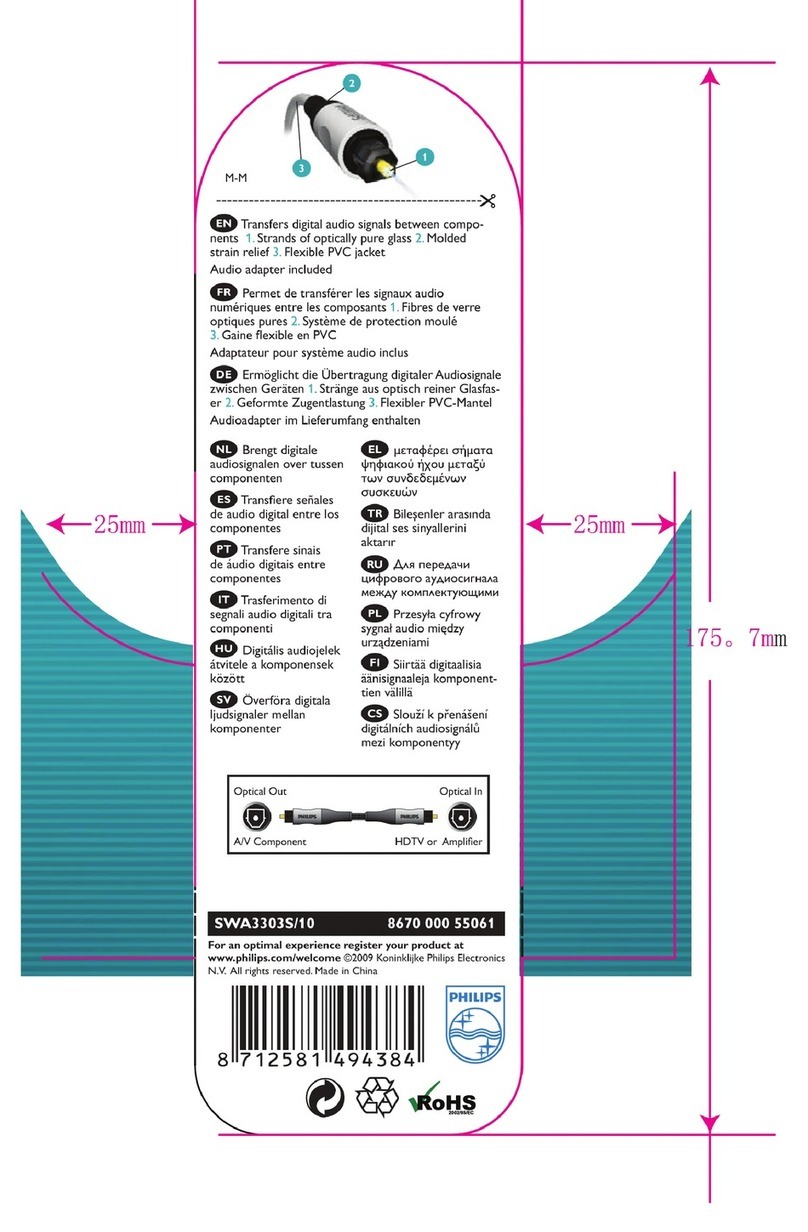Streetwize SWEV4 User manual

SWEV4
Electric Vehicle Charging Cable
UK 3 Pin to Type 2 | 10 Amp | Single Phase
IP55
WATERPROOF
RATING
3.7kW
MAX CHARGE
CURRENT
5m
CABLE
LENGTH

Intention For UseTable of Contents
Product Elements
Product Overview
Thank you for purchasing this UK 3-pin to Type 2 electric
vehicle (EV) cable from Streetwize. This cable is intended
for charging EV vehicles with a Type 2 inlet via a UK 3-Pin
mains plug socket. This cable has a control box which
provides the charge status via the LED indicator display as
well as several electrical protection features.
This product is suitable for use with battery electric
vehicles (BEV) and plug-in hybrid electric vehicles (PHEV)
that have a Type 2 socket.
IMPORTANT: Never use an additional 230V AC extension
cable when using this cable. Always connect this cable
directly to a mains power socket. It is recommended that
you position your vehicle in close proximity to a mains
socket.
before using this product, we recommend that you familiarise
yourself with all the information in this document.
please keep this document for future reference.
Intention For Use
Product Elements
Product Overview
Health & Safety Guidelines
Preliminary Measures Prior to Charging
Operating Instructions
Charging Times
Maintenace & Care
Disposal
Technical Support
Technical Specifications
Certifications
03
03
03
04
05
05
05
06
06
06
06
07
• EV charging cable
• Storage bag
UK 3 Pin to Type 2 Specifications
Amperage: 10A
Charge current: 3.7kW
Single phase

Health & Safety Guidelines About the Control Box
Indicator Status Description
Power
Charging
Fault
Danger: Electrical & Fire Hazard
The electric vehicle cable needs to be properly connected to the vehicle charging inlet. Incorrect connection can lead
to electric shock or fire during charge.
Only use mains power supply or grid sockets when charging your electric vehicle. The socket must comply with
regional/national laws and standards
You must comply with the safety instructions written in your vehicle manual and in this document
The Control Box has the following protective features
• Leakage protection
• Overvoltage/under-voltage protection
• Overheat protection
• Overload protection
If any of these protective features are enabled, the control box would stop the charging process. Once the charge
has stopped, the control box will perform a self-check to ensure the right operating conditions are met so that it can
restarting
If overvoltage or undervoltage has been detected, you will need to disconnect the cable first. Then reconnect to the
correct voltage supply.
Indicator State Description
Power Charging Fault
On Off Off Idle & ready for use
On-Off(1s) Off Off Connected, not charging.
Check connection
On On-Off(0.5s) Off Charging
On On Off Charge complete. Battery
is fully charged.
On-Off 1 time On-Off 1 time On-Off 1 time Performing self check
On Off On-Off 1 time High temperature
On Off On-Off 2 times Low voltage
On Off On-Off 3 times High voltage
On Off On-Off 4 times Ground protection
On Off On-Off 5 times High current (t)
On Off On-Off 6 times High current (p)
On Off On-Off 7 times Leakage protection
On Off On-Off 8 times Relay Fault
On Off On-Off 9 times Communication failure
Power LED: Indicates that the cable is receiving power input to charge your vehicle
Charging: Indicates that the charge is taking place.
Fault: Indicates there is a failure in the charging system (see Indicator Status Description).
General Safety
• Do not slide the cable over any sharp edges.
• Never kink the charging cable.
• Do not drive over the plug, control box or cable.
• Always handle the cable with care. Never exert any unnecessary force or strain on the cable.
• Do not coil the cables.
• Do not use the cable outside of the operating temperature range from -30oC to 50oC.
Danger: Electrical shock, short circuit, fire or explosion
• If either the product is damaged/faulty or the socket is damaged/faulty, do not use the product. Failure to comply
can lead to either a short-circuit, electrocution, explosion, fire or burns.
• Never use the charging cable if it is damaged. Always check both ends of the cable as well as the control box
before using the product.
• Always ensure the cable is properly connected to the socket. This includes the connection at the vehicle inlet and
the 3-pin socket.
• Operating the cable using a damaged socket can result in a serious injury or fire.
• Never attempt to open the control box or the casing on either end of the cable. Please seek a qualified
professional for any servicing or repairs.
• Always use the correct voltage when using the cable.
• Never use a extension cable for this cable
• Never use a multiple plug socket adapter.
• Never attempt to modify or repair the electrical component of this product.
• Never touch any of the electric components of the vehicle charging inlet or the electrical vehicle cable.
• Keep sockets, plug connection and the electric cable away from the moisture, water, snow, ice and other liquid. Do
not immerse any of the components of the cable in water. Even though the cable does come with a IP55 rating,
the health & safety measures outlined in this point are imperative.
• In the event of a thunderstorm, never attempt to charge your vehicle.
• Never insert any object into either the vehicle charging inlet or into the plugs of the cable.
• Only use a dry cloth when cleaning.
• Only clean the cable if it is fully disconnected from both the vehicle and grid socket.
• This charging cable should not be operated by a person(s) who is not familiar with the product’s use or those who
have not read this document.
• This product is not a toy and should be kept away from children. If the cable is in use and children are near it, they
must be supervised at all times.

Maintenance & Care
Disposal
Technical Support
Technical Specification
Danger: Electrical & Fire Hazard
• Only clean the product with a dry cloth. Do not use any cleaning agents or flammable solvents, such as
alcohol or benzene.
The disposal of decommissioned devices must be in accordance with the applicable country- specific and regional
laws and guidelines. Equipment and batteries must never be disposed of with domestic waste.
•Decommissioned equipment must be placed in a collection facility for electronic waste or disposed of via your dealer
•Dispose of the packing material in the respective collection bins for cardboard, paper and plastics.
If you require any technical support for your product within the warranty period, please contact us on:
Specifications) along with the technical query and proof of purchase.
Product Streetwize UK 3 Pin to Type 2 10A EV Charging Cable
Supplier Code SWEV4
Application Standard IEC 62196
Electrical Performance
Rated Current 10A
Output Current 10A
Operation Voltage 120V/250V
Insulation Resistance >1000mΩ(DC500V)
Terminal Temperature Rise <50K
Withstand Voltage 2000V
Contact Resistance 0.5mΩ Max
Mechanical Properties
Mechanical Life no-load plug in/out >10000 times
Coupled Insertion Force 45N<F<100N
Impact of External can afford 1M drop and 2T vehicle run
over press
Environmental Performance Operating Temperature -30˚C to +50˚C
Applied Materials Case Material Thermoplastic, flame retardant grade
UL94 V-0
Terminal Copper Alloy, Silver Plating
Operating Instructions
Charging Times
Preliminary Measures Prior To Charging
To use the electric vehicle cable, please follow the instructions below:
1. Before using the cable, please refer to your vehicle manual and familiarise yourself with instructions on how to
charge your vehicle.
2. Completely unravel the charging cable, taking care the cable is fully grounded to prevent tripping over the cable.
3. Plug the cable into your mains power supply. You should see the Power LED (Green), Charging LED (Green) and
Fault LED (Red) on the control box flashing simultaneously which indicates that the control box is performing a
self-check.
4. Once the self-check has been completed, you will only see the Power LED come on to inform you that it is idle and
ready for charge.
5. Insert the other end of the cable into the inlet socket of your vehicle. Once connected, the Charging LED on the
control will begin to flash to indicate that charge is in progress.
6. Once charge is complete, the display box will show both the Power LED and the Charging LED as fully lit.
7. To stop the charge, turn off the mains power supply, and then disconnect the plug from the vehicle inlet. Remove
the power plug from the socket.
8. Place the cable back into the provided storage bag.
The table below shows the average charge times for our current electric vehicle charging cable range. Please note, the
charge times are based on a 24kWh battery being charged to 80%.
Before using this cable to charge your vehicle, please follow the steps below to ensure safe use of the product.
•Ensure the charging cable, which includes the control box, wire, plug is free from damage, rust and any other
abnormality. If it has damage, rust or any other abnormality, please do not use it.
•Check to see if the cable has any moisture. If so, please wipe dry with a clean & dry cloth and allow it to fully dry.
•Make sure you have the correct cable for your vehicle.
•Never use the cable in an environment where there is flammable substances
SKU Cable Type Ampage kW Phase Suitable For Charge Time (approx)
SWEV1 Type 1 to Type 2 32A 7.4kW Single Phase Home charging &
charging at public
station
2hr 35mins
SWEV2 Type 2 to Type 2 32A 7.4kW Single Phase Home charging &
charging at public
station
2hr 35mins
SWEV3 Type 2 to Type 2 32A 22kW 3 Phase
(Fast)
Commercial 55mins
SWEV4 Type 2 to UK 3Pin 10A 3.7kW Single Phase Home Charging 5hrs 15mins
SWEV5 Type 1 to Type 2 16A 3.7kW Single Phase Home charging via
personal charging
station
5hrs 15mins
SWEV6 Type 2 to Type 2 16A 3.7kw Single Phase Charging at public
station
5hrs 15mins
*Please note, the charge times are based on a 24kWh battery being charged to 80%

www.streetwizeaccessories.com
Streetwize: Ashburton Road West, Trafford Park, Manchester, M17 1RY
For Product Support:
E: suppor[email protected]
T: +44 (0)161 447 8597
For Trade Enquiries:
T: +44 (0)161 447 8580
EU Registered Address: Ace Supply Co
(Europe) Ltd, 25 Herbert Place, Dublin 2,
D02 A098 Republic of Ireland.
UK Legislation
2016 No. 1101 The Electrical Equipment (Safety) Regulations 2016
2016 No. 1091 The Electromagnetic Compatibility Regulations 2016
2012 No. 3032 The Restriction of the Use of Certain
Hazardous Substances in Electrical and Electronic Equipment Regulations 2012
European Directives
2014/35/EU
2014/30/EU
2011/65/EU + (EU)2015/863
IEC 62196-1 Plugs, socket-outlets, vehicle connectors and vehicle inlets – Conductive charging of electric vehicles
IEC 62196-2 Plugs, socket-outlets, vehicle connectors and vehicle inlets – Conductive charging of electric vehicles
Table of contents
Other Streetwize Cables And Connectors manuals
Popular Cables And Connectors manuals by other brands

Siemens
Siemens 7XV5450-0BA00/DD manual
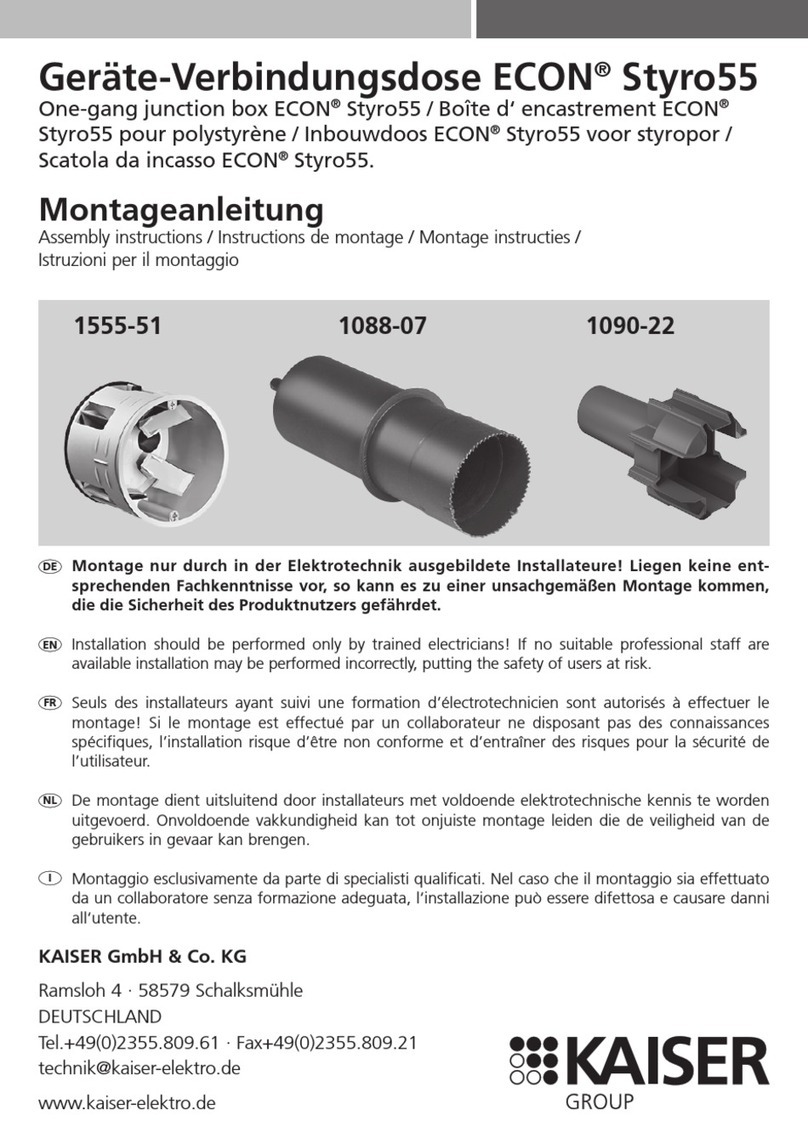
Kaiser
Kaiser ECON Styro55 Assembly instructions

TE Connectivity
TE Connectivity D5000-S instruction sheet
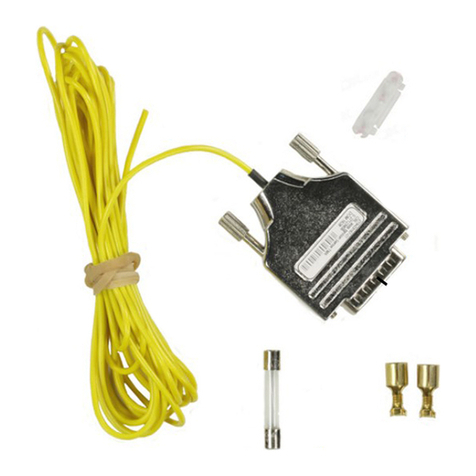
Tait
Tait TMAA04-05 installation instructions
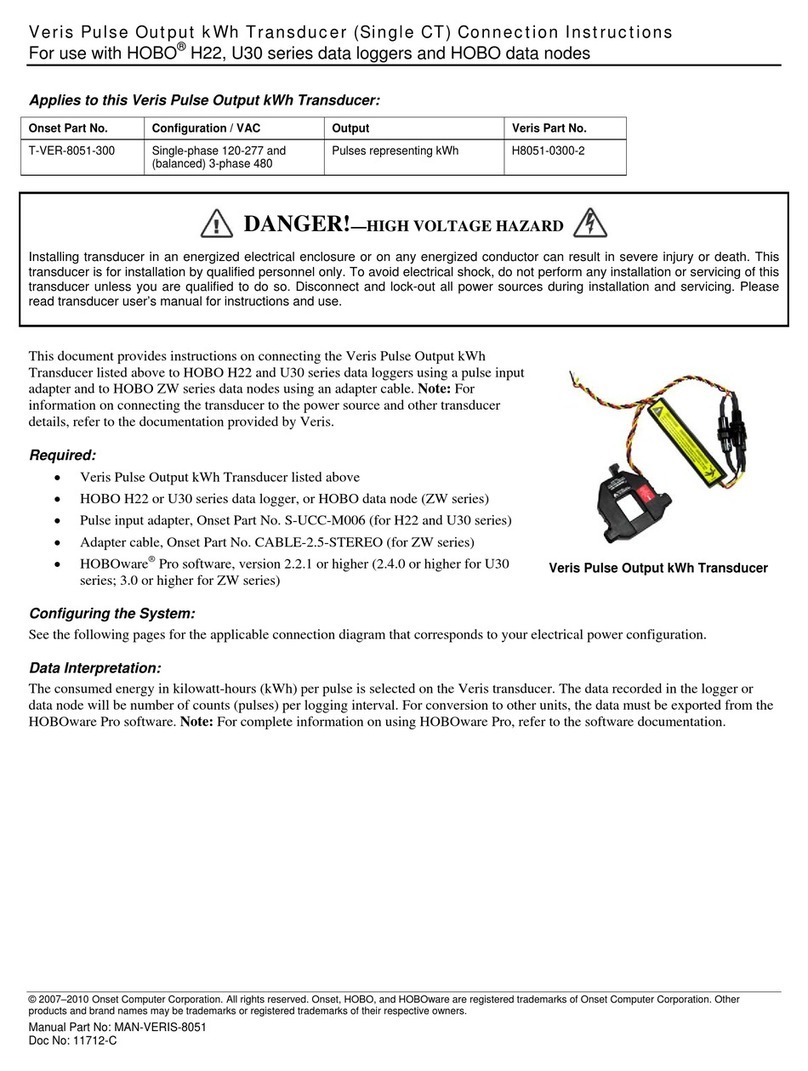
Onset Computer Corporation
Onset Computer Corporation T-VER-8051-300 instructions
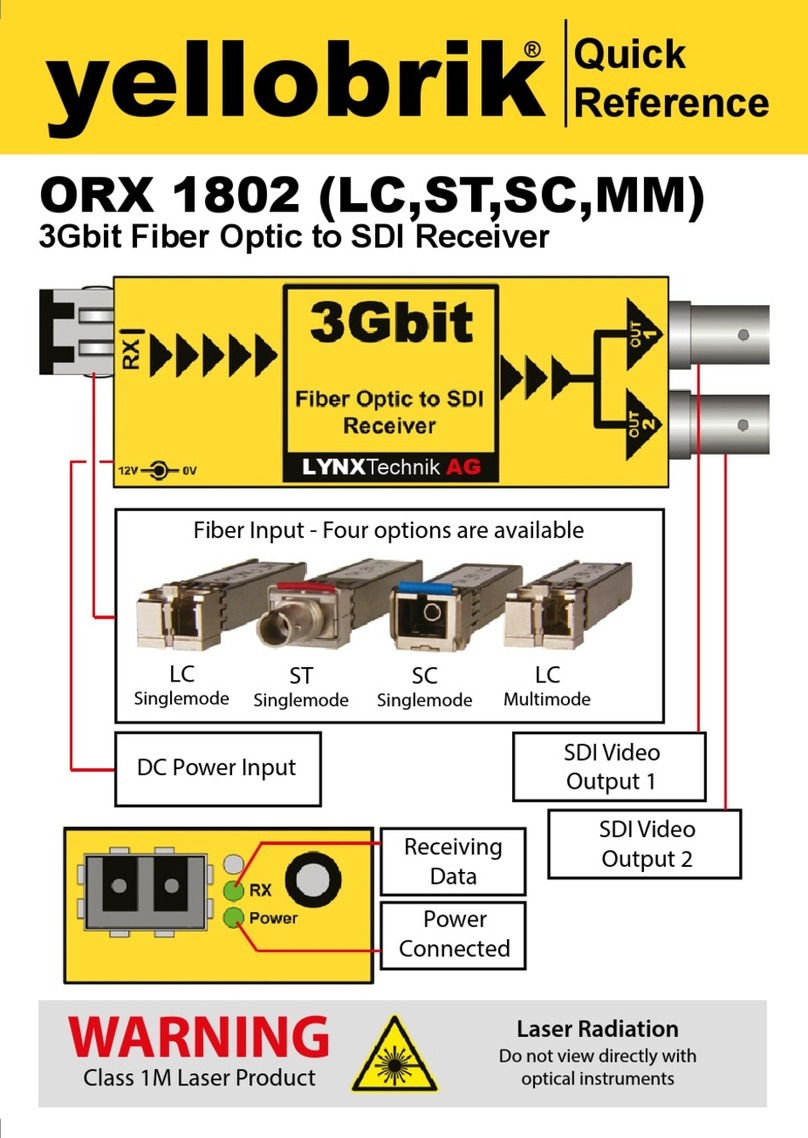
Yellobrik
Yellobrik ORX 1802-2 LC quick reference

